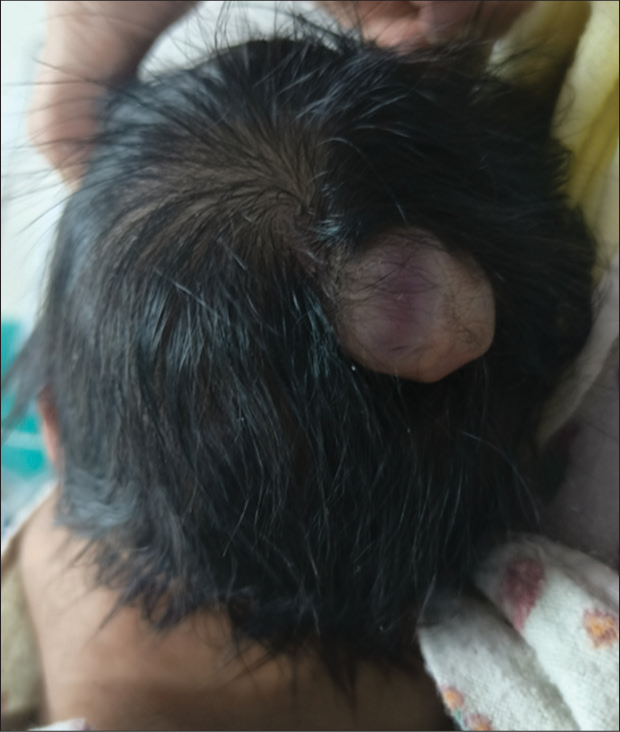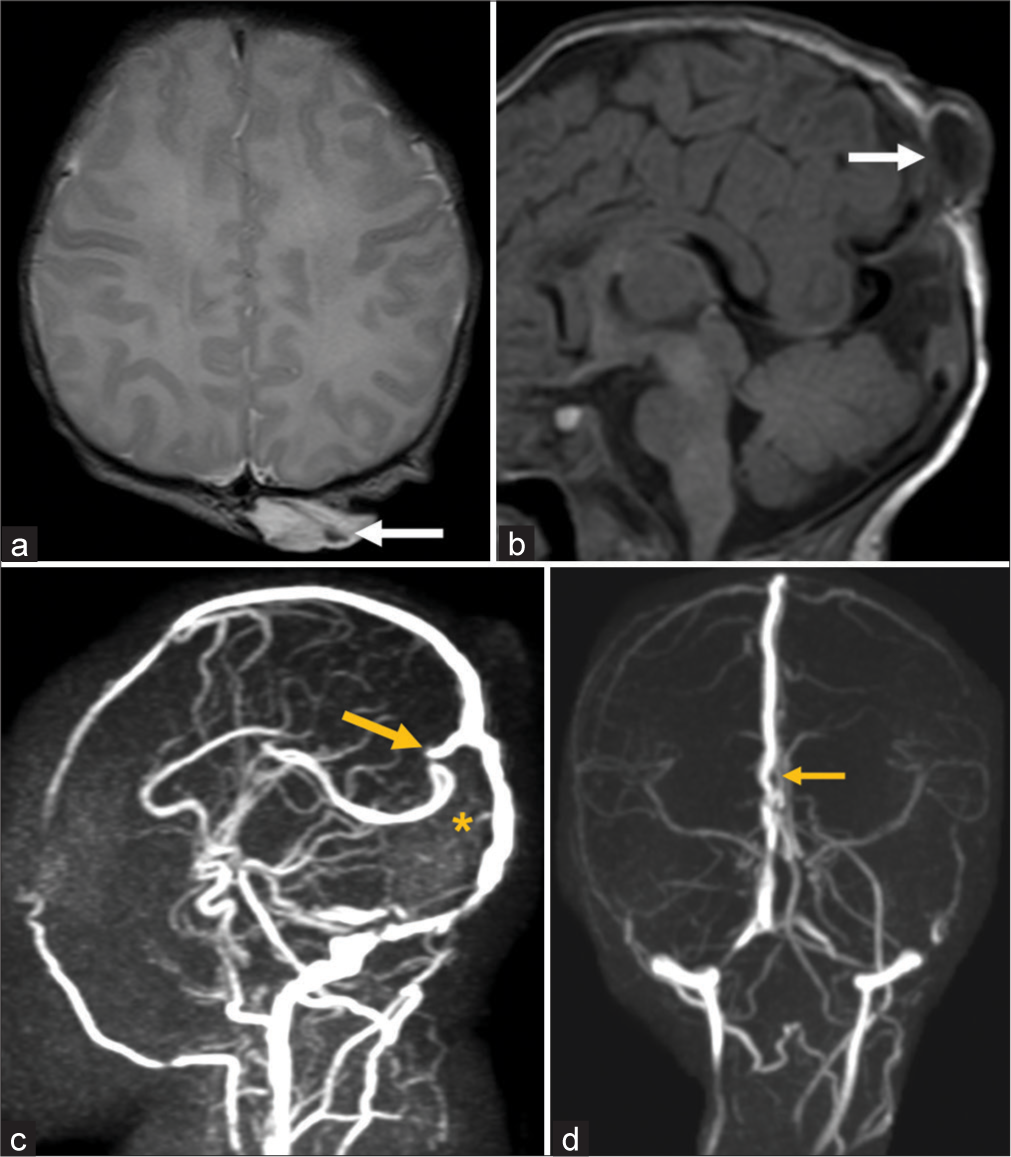Translate this page into:
Atretic parietal cephalocele – A rare cause of scalp swelling in a newborn
*Corresponding author: Nishigandha Yuvraj Salunke, Department of Radiodiagnosis, Bai Jerbai Wadia Hospital for Children, Mumbai, Maharashtra, India. nishigandhasalunke9@gmail.com
-
Received: ,
Accepted: ,
How to cite this article: Salunke NY, Aggarwal N, Gala F. Atretic parietal cephalocele – A rare cause of scalp swelling in a newborn. Wadia J Women Child Health. 2024;3:106-7. doi: 10.25259/WJWCH_21_2024
Atretic parietal cephaloceles are skin-covered subscalp lesions due to herniation of dura, fibrous tissue, and dysplastic brain tissue through the skull defect.[1] We present a case of 2–day-old male neonate with complaints of swelling over the occipitoparietal region since birth [Figure 1] who was referred for magnetic resonance imaging (MRI) for further characterization. MRI showed calvarial defect at the vertex with subgaleal cystic lesion with no herniation of brain tissue into it [Figure 2a and b]. Vertical orientation of primitive falcine vein is the most common associated finding[2] as was seen in our case [Figure 2c]. Other findings include focal fenestration of superior sagittal sinus at the site of atretic parietal cephalocele [Figure 2d] and prominent superior cerebellar cistern. Imaging plays an important role in differentiating atretic cephaloceles from true cephaloceles as the prognosis of former is better. Treatment is surgical excision.

- Clinical image of the scalp shows swelling over parieto-occipital region.

- (a) Axial T2-weighted magnetic resonance imaging (MRI) shows cystic subcutaneous lesion near vertex with internal hypointense band (fibrous content - white arrow), (b) Sagittal T1-weighted MRI image shows calvarial defect in parietal bone (white arrow) with cystic subcutaneous lesion, (c) Magnetic resonance (MR) venography shows vertically oriented persistent falcine sinus (yellow arrow), absent straight sinus (yellow asterix in normal location of straight sinus), (d) Coronal plane of MR venography shows focal fenestration of superior sagittal sinus at the site of atretic parietal cephalocele. Focal fenestration in superior sagittal sinus (yellow arrow).
Ethical approval
Institutional Review Board approval is not required.
Declaration of patient consent
The authors certify that they have obtained all appropriate patient consent.
Conflicts of interest
There are no conflicts of interest.
Use of artificial intelligence (AI)-assisted technology for manuscript preparation
The authors confirm that there was no use of artificial intelligence (AI)-assisted technology for assisting in the writing or editing of the manuscript and no images were manipulated using AI.
Financial support and sponsorship
Nil.
References
- Parietal atretic cephalocele: Associated cerebral anomalies identified by CT and MR imaging. Neuroradiol J. 2015;28:217-21.
- [CrossRef] [PubMed] [Google Scholar]
- Atretic cephalocele-an uncommon cause of cystic scalp mass. Malays J Med Sci. 2010;17:61-3.
- [Google Scholar]





